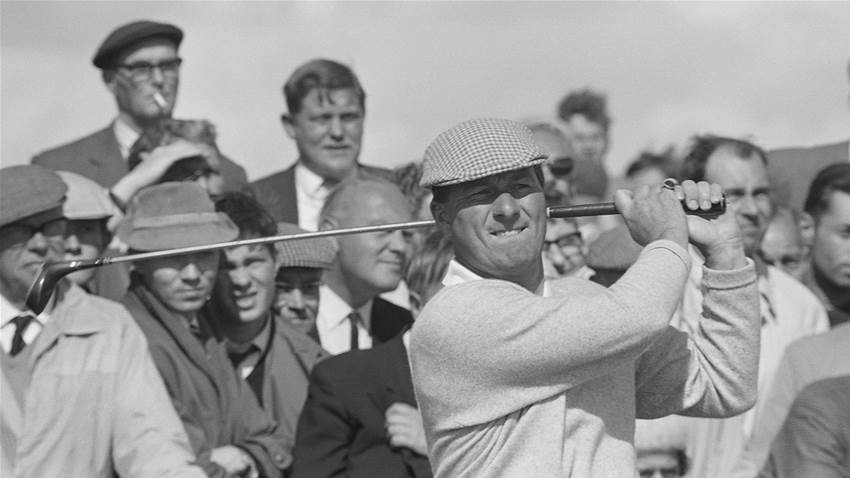Australian golfers have a rich history at The Open Championship.
Ask any of our elite players to name the major championship title they covet most and The Open always gets a look in.
Perhaps it is the past triumphs of Peter Thomson, Greg Norman and Ian Baker-Finch that have fuelled the dreams of our aspiring Open winners. Or is it the courses and the type of golf required to win on them? Or, is it as simple as wanting to win the trophy that nearly every great player in the history of the game has won? It’s probably a combination of all three.
Australia’s first strong connection with The Open Championship dates back to 1904 and the same venue that will host this week’s championship, Royal St. George’s.
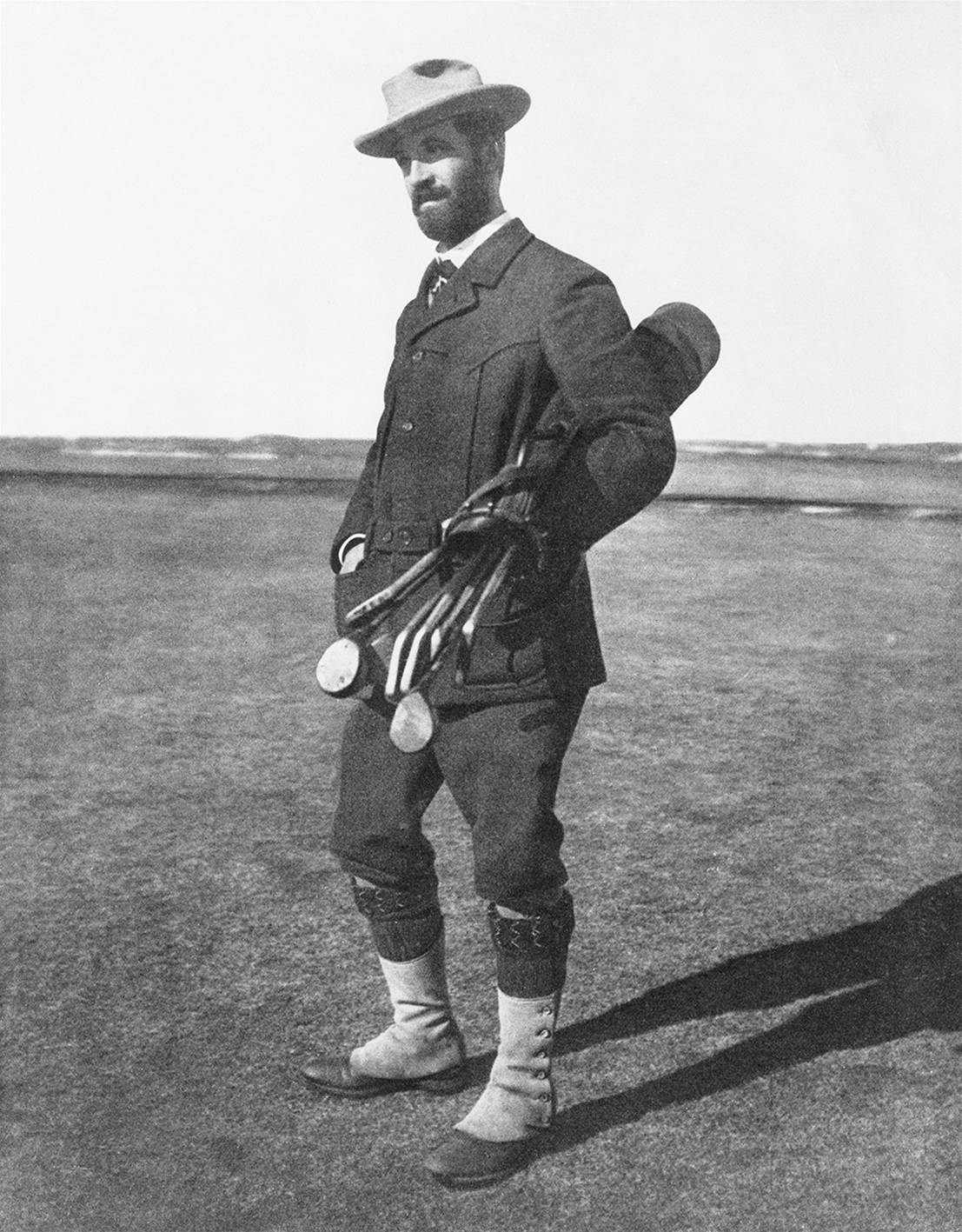 Walter Travis was born in Maldon, Victoria, and emigrated to the United States as a 23-year-old sales representative of a hardware and construction company. He played his first game of golf in 1896, aged 35, and won the first of three U.S Amateur Championships just five years later.
Walter Travis was born in Maldon, Victoria, and emigrated to the United States as a 23-year-old sales representative of a hardware and construction company. He played his first game of golf in 1896, aged 35, and won the first of three U.S Amateur Championships just five years later.
In 1904, Travis (pictured right) travelled to England and won the British Amateur before taking his place in the field for The Open, where he missed the cut.
When The Open returned to Royal St. George’s in 1911, a two-time Australian Open Champion was in the field.
The Hon. Michael Scott – the son of John Scott, Earl of Eldon – was 22-years-old when he emigrated to Australia from England. He won most of the major amateur events in Australia, including the national title four times, and claimed the inaugural Australian Open in 1904. He won it again in 1907, just before returning to England.
Scott played in the 1911 and 1912 Opens, finishing T41 and T37 respectively. After serving in World War I, Scott played two more Open Championships with his best result coming in 1922 when he finished T20. He went on to make headlines in 1933 as the oldest winner of The Amateur Championship, aged 54.
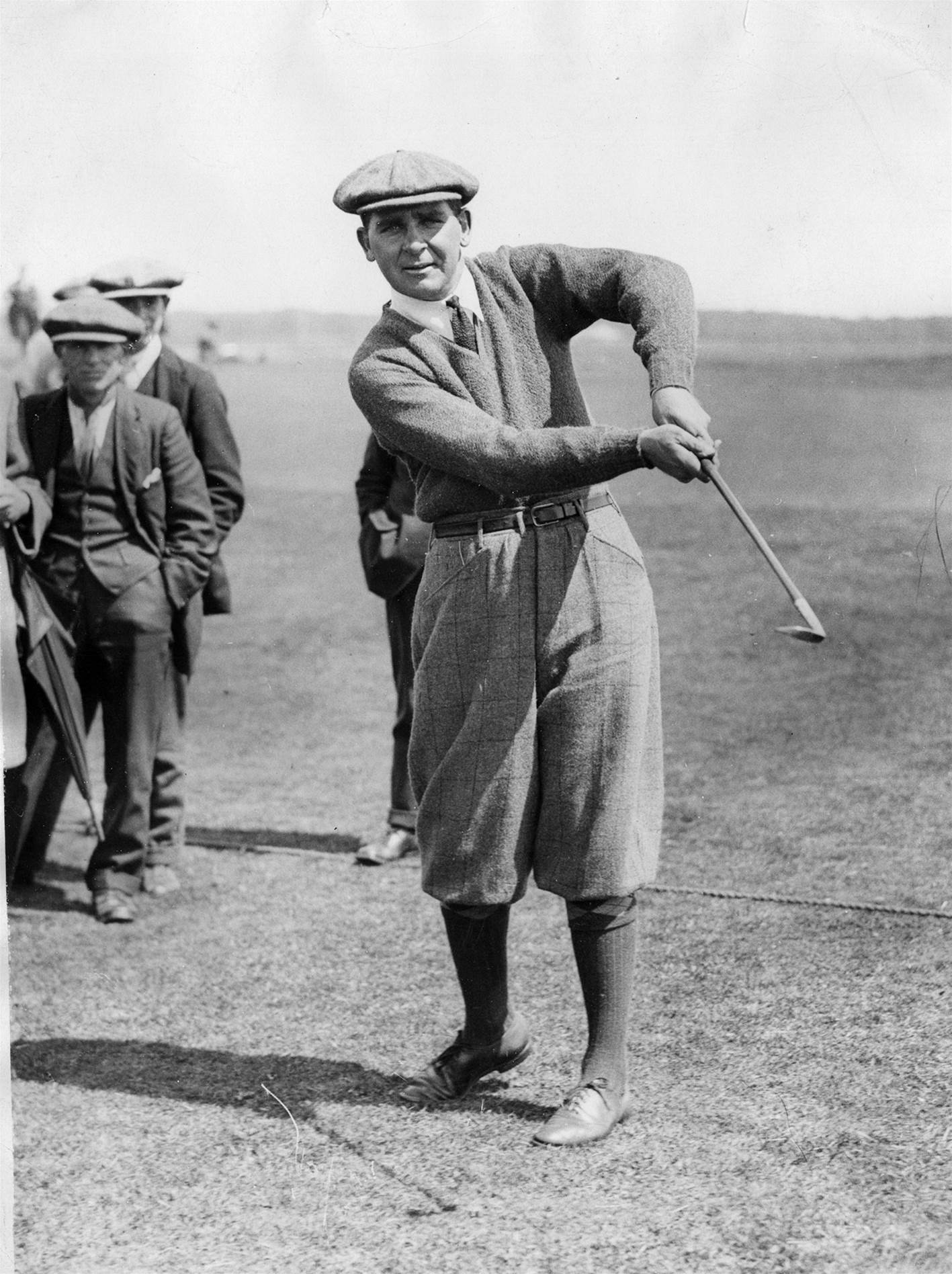 Australia’s first real chance to celebrate an Open Champion came in 1921 at St. Andrews, the same year Bobby Jones made his Open debut and walked off during the third round after taking four shots to get out of Hill Bunker on the 11th hole.
Australia’s first real chance to celebrate an Open Champion came in 1921 at St. Andrews, the same year Bobby Jones made his Open debut and walked off during the third round after taking four shots to get out of Hill Bunker on the 11th hole.
Sydney professional Joe Kirkwood – a year after winning the Australian and New Zealand Open double – undertook the arduous journey to the Home of Golf where he finished T6, six strokes behind winner Jock Hutchison, after a disastrous final round 79.
It wasn’t the last time Kirkwood (pictured right) would have the Auld Claret Jug in his sights only to falter at the final gasp.
At Royal Troon in 1923, he led with a handful of holes to play before stumbling to a closing 78 and a fourth-place finish, three behind English pro Arthur Havers. And, again, in 1927 (St. Andrews) and 1934 (Royal St. George’s), Kirkwood had a top-five result but in both championships the field were playing for second behind Bobby Jones and Henry Cotton respectively.
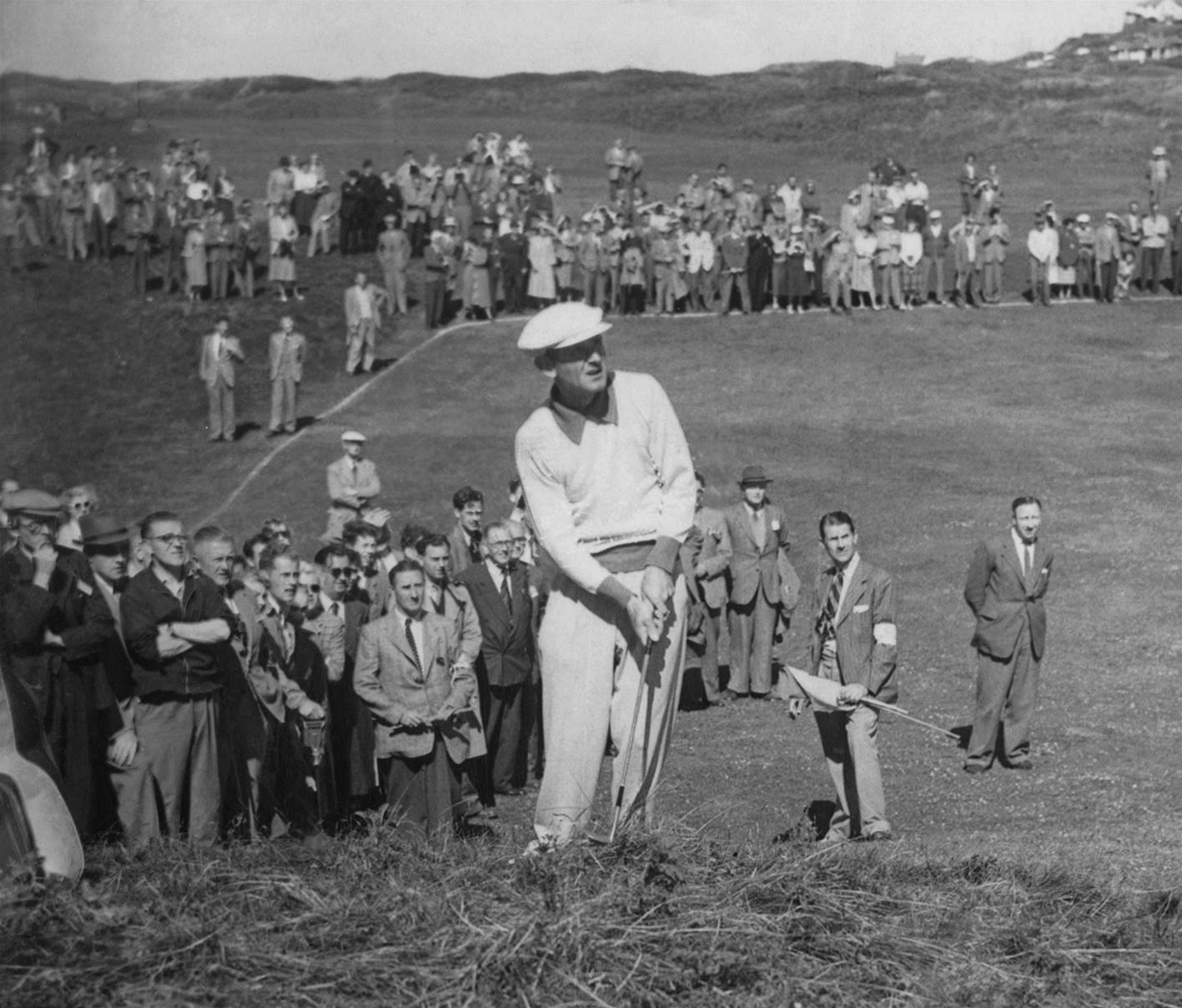
When The Open resumed after World War II, it seemed like only a matter of time before Queensland’s Norman von Nida would win the Claret Jug. Between 1946 and 1948, ‘The Von’ finished T4, T6 and T3 but a victory in the championship would unfortunately elude him. That wasn’t the case for one young player von Nida mentored in his early days playing the British circuit.
Peter Thomson became the first Australian to win The Open in 1954 at Royal Birkdale. Runner up finishes in the two previous years had steeled a young Thomson in the ways of winning an Open and he did so with aplomb, getting up-and-down for par twice from difficult bunker lies in the last three holes to claim the trophy by a stroke from Welshman Dai Rees, South African Bobby Locke and England’s Syd Scott.
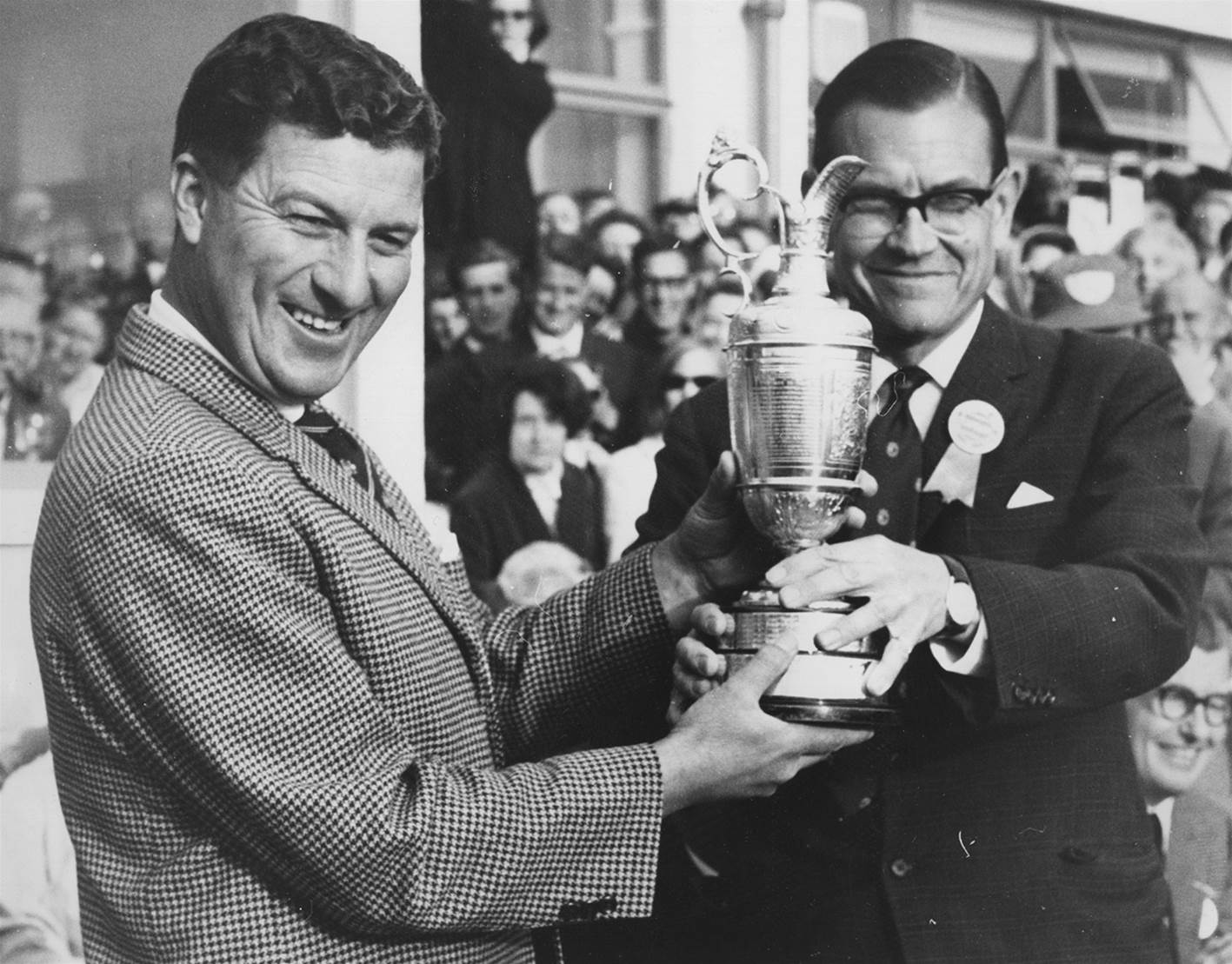
Thomson’s Open victory began a lengthy period of domination at the championship. Royal Birkdale was the first of three consecutive wins, before finishing runner up to Locke in 1957 at St. Andrews. He did, however, claim his fourth Claret Jug in 1958 and a fifth in 1965, again at Royal Birkdale.
In the middle of that Thomson run was the Centenary Open win by his good mate, Kel Nagle. Nagle, then 39, had to overcome the rain, the cold and a charging Arnold Palmer to claim the Jug by a single stroke and put an end to the American’s Grand Slam aspirations. In the nine years following his win, Nagle had a further six top-10s in the championship.

Thomson made his last regular Open Championship appearance in 1979 at Royal Lytham, aged 50, and finished T26. In the 20 years between his Open debut in 1951 and 1971, Thomson had five victories and 13 top-10 finishes and never missed a cut during those two decades.
Despite the depth of talent playing in America and Europe in the 1970s, there was only one real chance for an Australian victory at The Open.
That was in 1975 when Jack Newton – whose two previous Open appearances yielded missed cuts – opened with a solid three under 69, as did his mate Bob Shearer, to sit one stroke from the lead. Despite a second round 71, Newton found himself drifting back into the pack. But a course record 65 in the third round at Carnoustie catapulted the Novacastrian back into contention, just a stroke adrift of 54-hole leader Bobby Cole, from South Africa.
But it was Watson, who birdied the final hole, and Newton that would fight out the result after finishing tied at nine under through 72 holes. The 18-hole Sunday play-off was equally tight throughout. When Newton chipped close for a certain birdie on the par-5 14th, Watson chipped in for eagle to gazump him. But Newton’s head never dropped.

Watson, making his Open debut, and Newton stood tied as they walked the 18th hole. Unfortunately, Newton’s approach was heavy and pulled left into a bunker, from where he played out to 15 feet. Watson missed his birdie from 25 feet but tapped in for par, seconds later Newton missed his par saver to tie in what would be the last Open Championship decided by an 18-hole play-off.
History will show Watson would become one of the great champions winning five Opens in just nine years, while Newton’s career, and almost his life, was cut short in July 1983 when he walked into a plane’s propeller at Sydney Airport.
Related Articles

Review: Clearwater Golf Club

Review: Omaha Beach Golf Club

